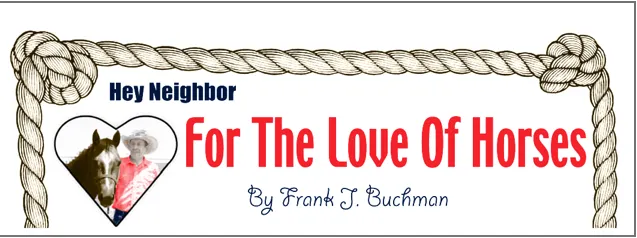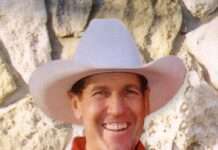“The Kansas equine sector provides many positive benefits to people in the state.”
Leah J. Tsoodle at the Kansas State University Agricultural Economics Department simply evaluated the 2021 Kansas Equine Survey.
For the Kansas Horse Council, the survey was conducted by the Ag Economics Department and the Kansas Department of Agriculture.
Justine Staten serves as executive director of the Kansas Horse Council headquartered in Manhattan. John Leatherman and Xianghong Li assisted Tsoodle in producing the 44-page glossy four-color hard copy final report.
“The Kansas horse industry is vast, representing many different types and uses of horses,” Tsoodle reiterated.
Kansas has a long-standing history with horses, as a major component of the ranching infrastructure in the state. Horses continue as a natural part of the rural landscape.
According to the survey, Kansas has sufficient horses and activities to maintain and offer industry growth potential, Tsoodle indicated.
The Kansas horse population is approximately 70,000 horses valued at $260 million.
“This population figure is probably underestimated based on one breed association’s number of registrations in Kansas last year,” Tsoodle said.
There are about 2,600 employees in the Kansas equine industry with about $150 million total income.
“Thus, the equine industry has about $280 million of total economic activity in Kansas,” Tsoodle tallied. “Our survey represents 11.5-percent of the total Kansas’ animal population.”
Full impact of the equine sector goes beyond the number of people employed and their wages. “A ‘ripple effect’ comes from buying and selling to other businesses and individuals in Kansas,” Tsoodle clarified.
Horses throughout Kansas provide broad services for both pleasure and work uses, Staten reported at the Kansas Ag Growth Summit.
Kansas has the third most farmland of any state, with 90 percent of the state devoted to agriculture. Horse operations demand relatively less land than other animal facilities.
“These two factors together equate to a relatively available and affordable base for expanding equine operations,” Staten said.
Kansas boasts many stables, arenas, horse breeders, farriers, veterinarians, trainers, and other professionals available to offer services to horse owners.
Facilities in Kansas City, Topeka, Kingman, and Salina among other locales are available for horse activities.
Kansas State University and Colby Community College offer extensive equine studies.
Despite these opportunities, there are many challenges facing equine industry growth in Kansas. They include lack of equine air transportation and high startup cost for undercapitalized equine entrepreneurs.
There are differing definitions within the equine industry under state statues creating taxation and liability confusion.
“In particular, there is inconsistency defining all equids, horses, mules, donkeys, and zebras as livestock,” Staten said.
Currently, no equine industry programs exist to promote, educate, and conduct research despite past efforts for a statewide feed checkoff program.
“Challenge in a feed bag checkoff is that distributors look at this as another ‘tax’ or paperwork obligation,” Staten said. “Thus, the industry may need to review an option on horse sales like the beef checkoff program for cattle.”
Since the last horse slaughter facility was closed, the horse market crashed. This created an explosion of unwanted horses that cannot be disposed of in any other manner.
“Animal welfare concerns developed for those unwanted, old and neglected animals’ excessively long trips to slaughter facilities,” State pointed out.
Kansas’ pari-mutuel licenses for horse racing lapsed and have been revoked since 2008.
The percentage paid by horse track slot machines to the state is 40-percent, higher than standalone casinos at 22-percent. As such, racetracks are not a viable business in their current condition.
“This has led to horse breeders exiting the state and reduced economic activity from horse breeding and racing,” Staten said.
With legalized sports betting, extra competition for betting dollars would negatively impact horse racing betting and reduce track purses. “Facing these multiple challenges, it’s unlikely Kansas will see resumed horse racing in this state,” Staten said.
Despite the availability of commercial insurance for equine-related business, premiums are often cost prohibitive, it was pointed out.
Many retailers do not offer farm sales tax exemption on equine products out of concern that sales are for hobbyists. The seller then becomes responsible for remittance.
Weather-related incidences, natural overgrowth, and trail use erosion, create an ongoing need for required attention and upkeep to equestrian trails. Governing agencies supply routine maintenance staff and volunteers make up the balance.
Due to the vastness of trails and ever-changing needs, there is a funding and staffing shortfall to maintain continuous oversight.
Additional opportunities for new trail development exist, but with concerns over trail maintenance challenges, these opportunities are not pursued ambitiously.
Still there have been key successes in the equine industry. Included are facility improvements at Hutchinson’s Kansas State Fairgrounds, Topeka’s Stormont Vail Events Center, and Kansas City’s American Royal.
Back County Horsemen of Kansas is developing new chapters for trail development and maintenance in the state.
Kansas equine industry leaders will continue collaborating development and implementation of long-term strategic growth strategy with key partners.
“We are working to enable an environment that encourages growth in the equine industry,” Staten said. “That includes eliminating barriers that prevent investment in equine facilities and enterprises.
“We hope to develop statewide equine exposition destinations ranging from world-class events to smaller activities with more specific needs.”
Equine Survey Points To Growth Potential For Horses In Animal Agriculture Industry
For the Love of Horses





